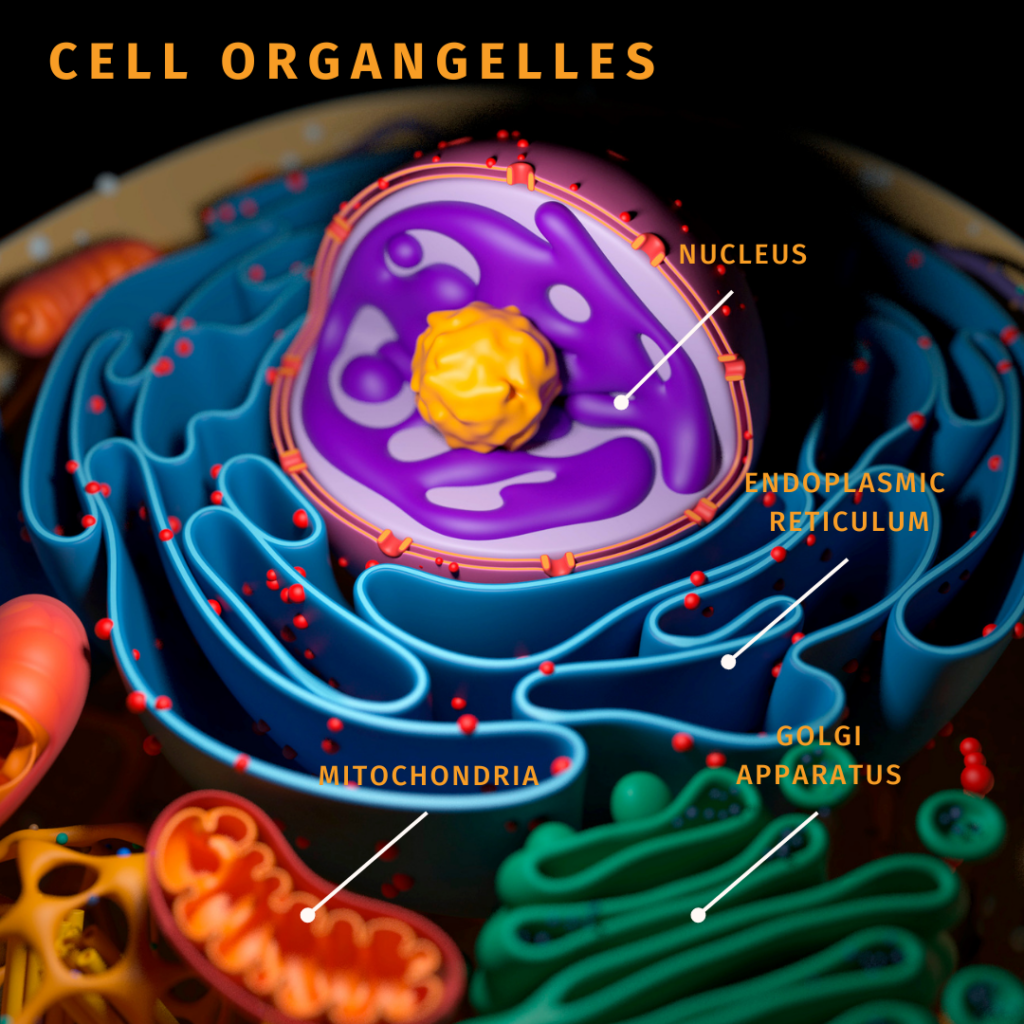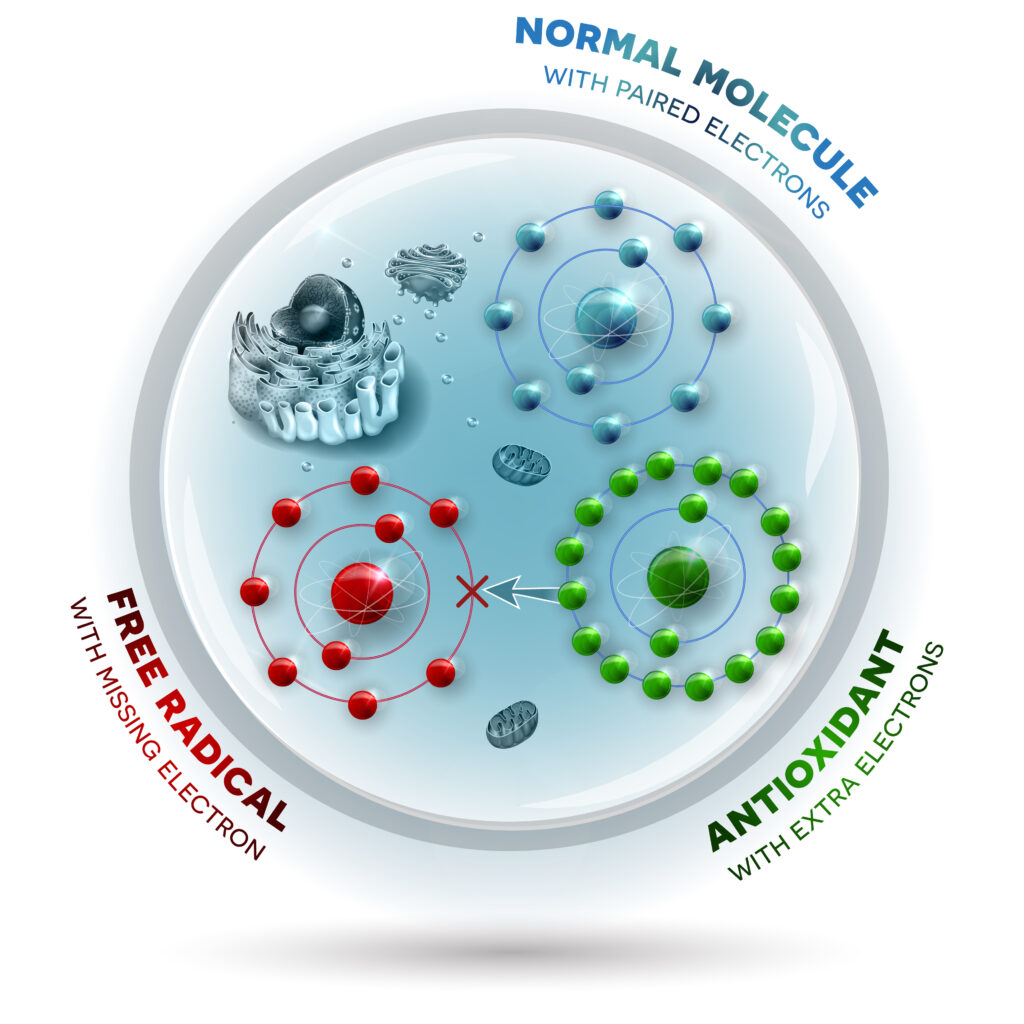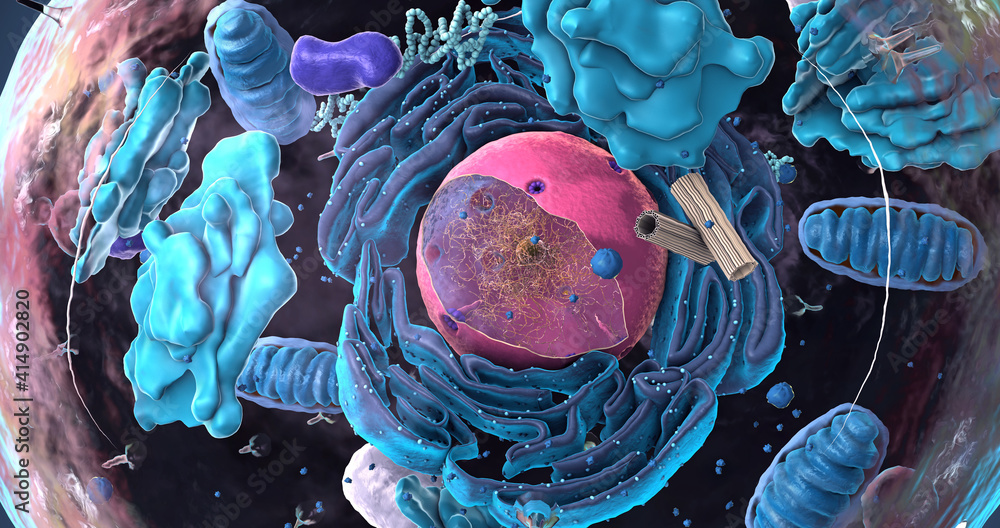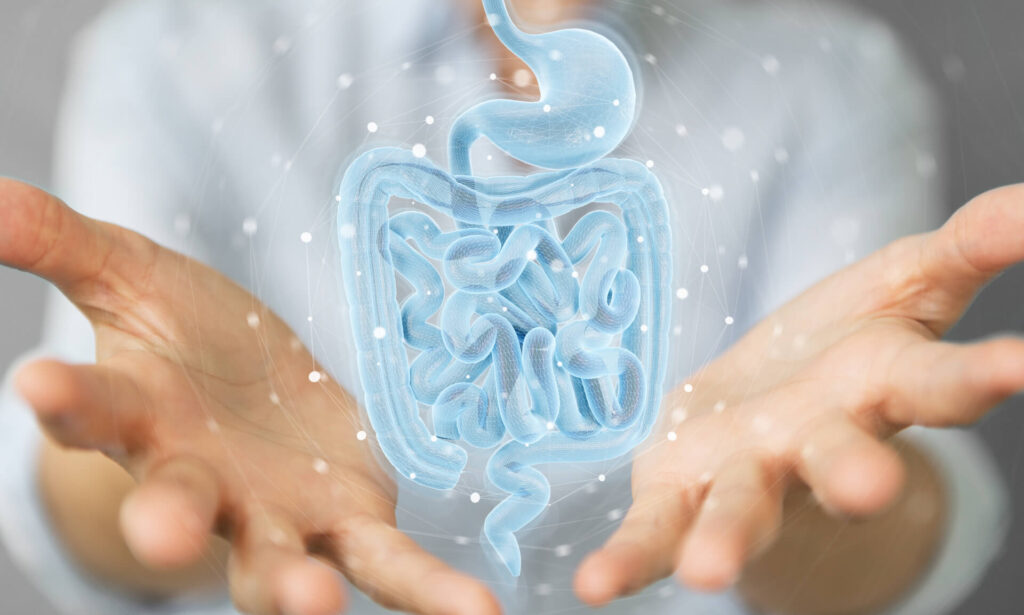Once upon a time, about 1.5-2 billion years ago, a tiny primitive cell, precursor to all human, animal and plant cells, engulfed a primitive bacterium. Instead of breaking down and killing the bacteria, the two cells lived together and thrived in a symbiotic relationship. The primitive cell (host) provided nutrition to the engulfed bacteria, and the engulfed bacteria provided energy to the host.
Flash forward 2 billion years, and the tiny engulfed bacteria became known as mitochondria, and the host cell evolved into a human.
This endosymbiotic theory of mitochondria origins, heralded by biologist Lynn Margulis in the 1960s, is now widely accepted in the scientific community. Mitochondria have their own DNA (passed on through the maternal line) and have structural, biochemical, and DNA features very similar to bacteria.
Mitochondria are known as our cell’s power factories. They convert the nutrition we eat into a form of energy our cells use, ATP (adenosine triphosphate). Increasingly seen as playing the central role in everything that ails us and ages us, mitochondrial dysfunction is a hot topic in the scientific and health community. This article reviews how mitochondria make energy and how you can unleash their full potential using proven health strategies.
Let's Get Started:
Meet Your Cells- an Ecosystem of Organelles.
Ok, this paragraph gets a little geeky, and you don’t have to understand it to improve your mitochondria, but it gives you a fascinating insight into who you are at the microscopic level
Every cell in your body is an ecosystem of organelles- small encapsulated entities that perform a specific function. There is the nucleus that stores your DNA and all the manufacturing equipment required for self-replication. Outside the nucleus, within the jelly-like cytoplasm, there are ribosomes- assembly plants that build proteins from amino acids using messenger RNA (mRNA) as a template. There is the Golgi apparatus – the packaging plant that processes, modifies, sorts, and packages proteins and lipids. The endoplasmic reticulum -quality control and production of vesicles, specialized sacs that transport proteins, lipids and waste products in and out of cells.
There are lysosomes, peroxisomes vacuoles, and, last but not least, there are the mitochondria.
Are some of these organelles, like mitochondria and chloroplasts, primitive bacteria that our ancient cells engulfed? There is ongoing research in this area. Either way, knowing how our microbiome affects everything from our emotions to our behaviour, that mitochondria were once a separate life form, offers us a humbling perspective of who we are and our place in the Universe. We are an ecosystem intricately connected and changing with the natural world around us.

Back to the mitochondria and this bit you need to get. After your microbiome and digestive enzymes break down your ingested food into simple molecules and your blood transports them to your cells, the simple sugars enter your mitochondria. Through a mind-boggling chain of chemical reactions, the mitochondria convert glucose and other simple sugars into ATP. ATP is the energy currency for all plants, animals and humans. Plants make ATP through photosynthesis, and animals make it by breaking down simple sugars. ATP is a highly efficient energy storage molecule that instantly releases energy. The more efficiently our mitochondria and cells make ATP, the more energy we have to think, move and realize our dreams and desires. So how do we keep our mitochondria efficient? Let’s explore.
Eat More Antioxidants
ATP production within the mitochondria produces significant amounts of free radicals. Any molecule missing a few electrons is a free radical, and that lack of a few electrons gives them a charge.
Like iron filings to a magnet, free radicals whip around your cell, looking to grab electrons from wherever they can. They can rip them off your DNA or a nearby protein altering their 3-dimensional shape. When you change the 3-dimensional shape of proteins or DNA, you change their function. That’s why excessive free radical exposure is so harmful to our health.
Free radicals are not all bad. Your immune cells purposely make and secrete free radicals that glom unto invading pathogens, neutralizing them. But too many free radicals in your cells prevent efficient cell metabolism leading to inflammation, aging, cancer, and neurodegenerative diseases. Excessive free radicals are bad and must be neutralized.
How do you neutralize free radicals? You flood your cells with molecules more than willing to share their electrons, antioxidants!

This explains why antioxidants are so essential for health. They mop up free radicals that not only come from metabolic processes in our cells but from air pollution, tobacco/ cannabis or any other inhaled combustion products, pesticides, and herbicides. Chemotherapy and radiation therapy also cause free radicals, all the more reason to flood your body with antioxidants during cancer treatment.
Fruits, vegetables, legumes, nuts, whole grains, green tea, dark chocolate and spices (turmeric, cinnamon, ginger, and garlic) contain various antioxidants. Eat a rainbow of fruits and vegetables; each vibrant colour contains different antioxidants. Aim for at least five servings/day, but ideally, eight or even more if exposed to excess free radicles.
Here is a simple guideline for estimating serving sizes:
- For fresh fruits and vegetables: a serving is approximately the size of a tennis ball or your fist.
- For leafy greens: a serving is about two cups of raw greens, such as spinach, kale, or lettuce.
- For dried fruits: a serving is about 1/4 cup.

Remember, juicing is a simple way to pop up your daily servings. Juicing eliminates fibre necessary for your microbiome, so mix juicing with eating whole vegetables and fruit to keep both your microbiome and mitochondria happy.
Energize with Exercise
Exercise is one of the simplest and most efficient ways to improve your mitochondria. Exercise forces your muscles to work harder, your heart to pump faster, and your lungs to expand to take in extra oxygen. All these actions require additional energy. How do your mitochondria deal with this increased demand?
Through a process called mitophagy, inefficient and dysfunctional mitochondria get selectively targeted for degradation and recycling. Mitochondria have their own DNA, and to meet the additional energy demand, they multiply, increasing the number of mitochondria per cell. This process of getting rid of old mitochondria and increasing their numbers per cell is called Mitochondrial biogenesis, and exercise is one of the most powerful ways to do it.

How much exercise do we need to improve our mitochondria? The same amount recommended for general health: 150-180 mins of moderate (Zone 2) exercise/week.
Moderate exercise is defined as physical activity that elevates the heart and breathing rates to a moderate level but still allows for comfortable conversation. Moderate exercise is usually performed at an intensity of 50-70% of an individual’s maximum heart rate, which is estimated by subtracting their age from 220 beats per minute.
Examples of moderate exercise include hiking, brisk walking, leisurely cycling, brisk housework, gardening, and dancing. The intensity of the exercise is less important than choosing the type you enjoy and will stick to. Try to get some of your moderate exercise by living a more active life rather than making exercise one more thing on your ToDo list.
Stress for Success
Stress is good for you! Yup, in small, controlled measures, stress pushes your mind and body out of their comfort zones and builds resilience. When we don’t challenge our brains with new experiences, we lose resilience and the ability to adapt to an ever-changing world.
So it is with our bodies. If we keep our bodies in a cushy zone, grabbing food as soon as we are hungry or a jacket as soon as we feel cold, never pushing our heart rate up, our cells and, thus, our bodies become sluggish. They lose resilience.
Small, controlled doses of physical stress make our cells more efficient. They become lean and mean, discarding old sluggish mitochondria and replacing them with a bigger batch of newer ones to deal with the higher energy demand of physical stress.

Hormesis is a phenomenon where low to moderate exposure to stressors can benefit an organism, improving health and resilience. Increasing evidence suggests there are two forms of physical stress ( besides exercise) that will enhance mitochondrial efficiency through mitochondrial biogenesis.
Intermittent Fasting
When your mitochondria become used to never-ending gobs of food coming their way to make ATP, they become sluggish and inefficient. When you fast, the mitochondria no longer have a constant stream of glucose to create ATP, yet their ATP needs have not changed. To adapt, they need to increase their efficiency by producing more mitochondria and eliminating the inefficient ones.
Numerous studies show that caloric restriction, using different fasting methods, promotes mitochondrial biogenesis. These fasting methods include intermittent fasting, alternate-day fasting and time-restricted feeding.
Time-restricted feeding (TRF), in my opinion, is the simplest as it fits easier into most lifestyles. TRF essentially keeps all your caloric intake within a certain time window between 8-10 hours and no caloric intake for the remainder 14-16 hours. You work the 14-16 hours of fasting around your sleep time, and the only rule with that 8-hour feeding period is that you need a minimum of one hour of fasting when you wake up and 2-3 hours of fasting before you go to bed.

There are no restrictions to what you eat or how much you eat during those 8-10 hours. Keeping your eating all within those hours, irrespective of what you eat, may lead to weight loss, an added bonus.
If your body is under increased energy demands, you should not fast. Pregnant or lactating women, children, adolescents, diabetics, those on meds that require regular food and those with larger energy needs than normal, febrile condition, cancer etc., should not consider fasting.
Cold Water Immersion
Immersing yourself in as little as 11 mins of cold water a week is enough to build resilience and increase mitochondrial biogenesis. All the rage these days, cold water immersion also increases your brown fat. It increases dopamine levels by 2.5X normal for several hours after immersion, increasing focus, energy and mood. The sudden constriction of your blood vessels with the cold and the dilation with warming improves your blood vessel tone.
That 11 mins /week typically is spread over several episodes and can be done via cold showers, swimming in cold water, ice baths etc.
For most people in northern climates, the simplest measure is to take a cold shower. Use a cooking thermometer to check your cold shower temperature; ideally, you want it between 10-15 degrees Celsius.

Once out of the shower, try not to warm yourself immediately by towelling down, try to let your body warm up on its own. Mix it up. Plunge into the cold ocean or lake or walk around for short periods in winter in minimal clothes. As always, start slow (especially if you are older) and work your way up. Be safe and never plunge into deep ice-cold water in case your body seizes up.
There is some evidence that exposure to heat in small controlled amounts (i.e. sauna) can also lead to mitochondrial biogenesis, but the evidence for this is not (yet) as strong as for cold immersion.
Supplements
Several nutritional supplements have been shown to support mitochondrial function, including coenzyme Q10 (CoQ10), alpha-lipoic acid, and creatine.
Some compounds have been developed that specifically target mitochondria and can help to protect them from oxidative damage. These include MitoQ, SkQ1, and SS-31, all types of antioxidants that are selectively taken up by mitochondria.
Unless you have a known mitochondrial disorder (rare), Chronic Fatigue Syndrome, Neurodegenerative Diseases (Parkinson’s, Alzheimer’s or Huntington’s) that may have a mitochondrial dysfunction component or are a professional athlete, I would stick to naturally boosting your antioxidant intake through foods. Or, if you already take a multivitamin/mineral daily, you can substitute it for a formula like xymogen that also covers for performance and mitochondrial health.
Putting it all Together
Once free-living organisms, Mitochondria determine how much energy we make and how much energy we have. Keep your mitochondria running efficiently by flushing them with antioxidants, building their resilience by pushing them with exercise, and exposing them to different environments to ease them out of their comfort zone.
Yes, chronic, uncontrolled stress is bad for you. But short bouts of physical or mental stress, stress that you choose to apply, where you are in control, builds mental and physical resilience. How do you feel accomplishing a task that pushed you out of your comfort zone? You feel energized! You feel alive!
As always, use the above information as guidelines, start low and go slow and always be mindful. Listen to your body’s messages when you take it out of its comfort zone.
This is your life, live it fully, build resilience, and let health be your guide.



